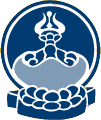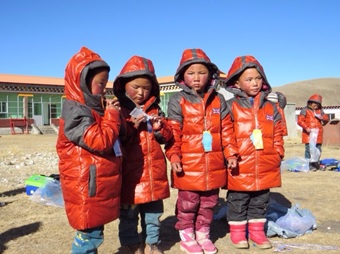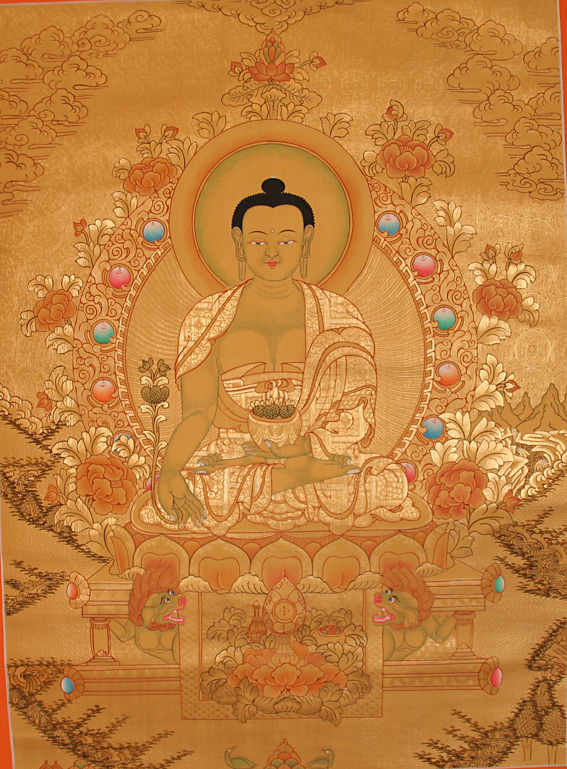 ZANGDOK PALRI NEWS
ZANGDOK PALRI NEWSSambhota Primary School – Orphanage & Sambhota Secondary School
No 25 – Septembre 2014
To all our sponsors and donors, a big thank you from the children of Dzogchen!
Primary school…
is over for the first generation of students. Today’s seniors have passed their final exams in primary school and after some ten years of studies are now headed for higher education.
Two boys will focus on Chinese language studies, whereas six girls have registered in the newly created school for Tibetan medicine in Dzogchen, connected to the equally new local hospital. After four years of study, they will either become nurses in the hospital or embark on medical studies to become physicians. These youngsters are obviously very pleased to be on the right track to realising their dreams…
As a result, 15 new students have found a spot in our primary school. For them, the first order of business in student life has been the purchase of a winter wardrobe, padded jackets and sturdy shoes to face the harsh Dzogchen winters (see cover picture). Two additional outfits will serve for summer and spring/autumn. We are all set for the new school year!
Tibetan medicine, a brief overview
Traditional Tibetan medicine is one of the oldest medical systems still practised today. Its approach is holistic, taking into account the whole individual, including all physical, mental and spiritual aspects, the person’s internal as well as external environment. Informed by Indian ayurvedic medicine and the Chinese, Persian and Greco-Arabic medical traditions, Tibetan medicine is a perfectly coherent synthesis of all these insights, deeply infused with buddhist spirituality.
Observing how the whole universe consists of the five elements (water, earth, fire, air and space), Tibetan medicine concludes that the basic forces of nature are in constant interaction with our organism, influencing it and making themselves available for its healing.
The three ‘humours’ (bile, wind and phlegm) are the energetic expressions of an individual’s state of health and need to be balanced for the person to enjoy good health. Various mental and physical factors can disrupt this balance: the prime causes of ill health are the ‘mental poisons’, i.e. negative emotions, closely linked to the humours. There is an additional range of secondary causes, however, such as nourishment, lifestyle or unfavourable surroundings, lack of exercise etc.
The diagnosis is based on pulse reading, in which the physician palpates both the patient’s arms simultaneously with three fingers of each hand, gaining information on all the vital organs. To this are added urine analysis, examination of the eyes and the body as a whole, as well as a consideration of the patient’s lifestyle in its various aspects. The physician, named amchi, may also turn to astrology, identifying the patient’s astrological make-up and determining favourable days for treatment.
To restore the balance of the humours, amchis will prescribe lifestyle changes, physical exercise and dietary adjustments. Other therapies include acupuncture, moxibustion, cupping, massage and of course Tibetan drug-making, always natural, based on plants and minerals, sometimes even precious stones, gold or silver.
In Tibetan medicine, however, healing of the body is achieved primarily through healing of the mind. As illness is caused by emotions triggered by unsuitable thought patterns and behaviour, it is essential that the patient adjusts his take on life and increases his understanding of his own internal world and the emotional factors that give rise to his illness.
to be continued…
A special thank you
goes to the children from the primary school in Weiler-la-Tour and their teacher, Mr Christian Schartz. They offered the funds raised through their annual book market, which was, like the years before, a great success!
A new yak cow for the school
We were able to purchase a new yak cow, in addition to the two cows already belonging to the Dzogchen school.
Yak cows, called ‘dri’ in Tibetan, produce less milk than cows but their milk has a high nutritional value. Being rich in carotene, it is of yellowish colour with a delicious taste, and its high content of butterfat makes it perfect for yogurt, butter, and cheese. A very welcome enrichment of the school’s menu, helping us to take care of the students’ health in a tasty and natural way!


